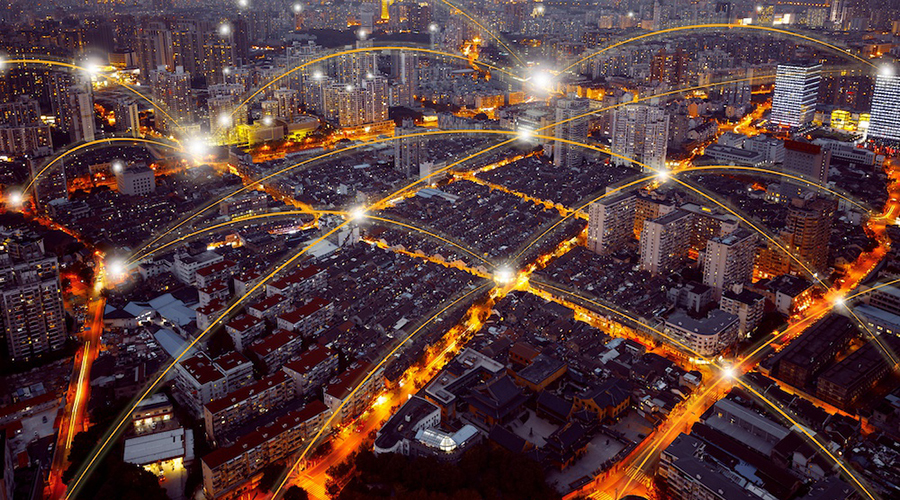The world is waking up around us. Smart technologies, present now in what seems like every household and public space, are giving rise to the next phase of connected living. Smart technologies are now the architects of connected living, reshaping the landscape of urban mobility. At the forefront of this revolution are groundbreaking technologies like the Internet of Things (IoT) sensors and artificial intelligence (AI) that are converging with data analytics and edge processing, giving rise to smart spaces – and even smart ecosystems (think: an entire city) that redefine the urban living. These are physical spaces where interconnected technologies and data fuse to provide streamlined, individually tailored experiences for all users who move through the ecosystem.
Delving into the realm of smart technologies, AI emerges as the driving force, infusing decision-making processes with unprecedented efficiency. Its ability to analyze massive datasets in real-time ensures that urban mobility becomes a symphony of calculated moves, reducing traffic congestion and enhancing overall safety. Moreover, the IoT sensors act as the eyes and ears of the ecosystem, collecting and transmitting data to empower AI in making informed decisions for intelligent traffic management.
The confluence of these technologies paves the way for a data-driven mobility future that is safer and more sustainable.
It’s not science fiction—it’s Social Innovation for a future with a better quality of life for all.

The technologies that create smart spaces are designed to be felt more than seen. For example, let’s imagine you have an important flight to catch. No longer do you need to lean on a friend or call a taxi. Instead, a shared autonomous vehicle arrives at your house, having already calculated how long it will take to get you to the airport on time.
New technologies such as Hitachi's Lumada Video Insights and IoT sensors are paving the path to smart mobility by providing real-time data analytics , enabling the sharing of data such as traffic, weather and road conditions , thereby reducing the time spent in traffic and eliminating commuting anxiety.
In addition to being faster, your route will also be safer. Vehicles with autonomous driving technology use sensors to detect nearby threats – stopping the car, changing lanes or slowing down to avoid a potential accident. This 360-degree sensing system has the potential to reduce the number of road accidents by 80%1 .
Autonomous vehicles won’t just transform your trip to the airport – there’s a significant social impact, too. Shared transit reduces costs, lowers carbon emissions, boosts fuel efficiency (self-driving cars have the potential to cut energy consumption in transportation by up to 90%2 ) and continuously contributes data to the highly connected infrastructure of smart cities.
With increasing urbanization and growing demand for intelligent public transport systems, shared autonomous vehicles can serve as one of the most practicable option to promote a green mobility ecosystem.

Once you arrive, the smart vehicle begins interacting with a smart space—the airport. The augmented video and IoT insights that optimized your route also contribute to curbside management, directing the flow of traffic so you’re not stuck in the car searching for a place to park, or where to enter the terminal. This seamless AI and IoT-enabled smart parking solution not only improves the passenger experience, but also contributes toward sustainability in urban transportation by saving fuel, reducing carbon emissions and complying with green mobility principles.
For many people, the anxiety of getting through the airport is one of the most stressful parts of traveling. Thankfully, the new technologies powering smart spaces have made the experience vastly simpler, saving you time and stress. Hitachi’s Lumada Video Insights combines video and laser-based Lidar (light detection and ranging) technology with data analytics and machine-learning tools.
All that tech helps creates a real-time 3D visual model of the airport, which streamlines check-in and security lines. For example, if the technology detects a long line at baggage drop, that will be communicated to airline staff, who can then open a second line to reduce passenger wait time. This same feedback is also applied at TSA security lines, enabling you—and every other traveler—to get from curbside to departure gate in the minimum amount of time.
Think of what you can do with your newfound time: shop, eat, relax, charge your phone. You won’t be sprinting through the airport or checking the time with increasing desperation in a crawling security line.
With the introduction of smart gates, the boarding process is also streamlined. One of the top factors in departure delays is when a flight runs out of overhead space. This leads to frustrating congestion as passengers search for overlooked slots or battle their way back to the front of the plane to have their carry-on checked. At a smart gate, however, 3D Lidar sensors automatically count and size luggage as you board, predicting remaining overhead storage capacity and sending that info to gate agents so they know exactly when to shift to checking carry-ons for the cargo hold. Never again will your flight be delayed by last-minute luggage Tetris. This also helps to save fuel and emissions by reducing delays and idle time spent on the taxiway or circling in the air.

Imagine a city where every move is optimized, congestion is a thing of the past and stress-free travel is the norm. Smart technologies are enabling the seamless integration of AI-driven data insights, ensuring not only efficient transportation but also fostering an intelligent multi-modal mobility system.
Integrating smart technology and real time data analytics into smart spaces and autonomous vehicles not only improves your quality of life, it also empowers us to make cities more sustainable—and more people-friendly. Many of these technologies are already operating quietly in the world around you, maximizing urban economic vibrancy and powering change for the greater good.
Whether streamlining travel or saving hundreds of thousands of lives on the road3 —these Social Innovations make the world smarter, safer, and healthier. And they make life more convenient for all of us—so whether you have a flight to catch or a meeting to make, you can focus on where you’re going and not how you’ll get there.
Hitachi's unparalleled expertise in smart technologies is enabling governments, cities and transportation agencies to gain complete data visibility and harness the potential of AI-powered insights to redefine urban commuting, — making it stress- and congestion-free and promoting a greener, smarter mobility ecosystem.